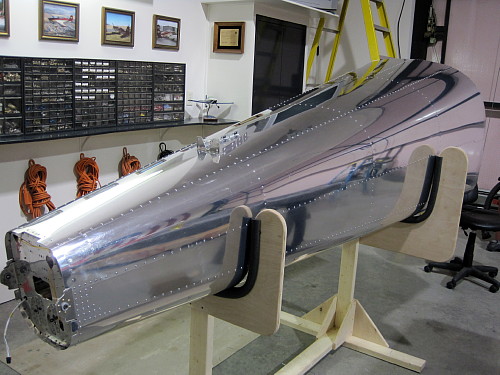In my youth (when I worked on the tail cone) I had not yet mastered the art of using the pneumatic rivet puller and hence created several aerodynamic anomalies (dents). Since I am now ready to attach said tail cone to the completed fuselage I look back on the inexperience of my earlier work and would like to improve the results before completion and paint. There are a number of locations where I (or my son whom I choose to blame since he not present to defend himself ) pushed too hard when pulling the rivet. My question is . . . how can I neatly and without further damage get those dents out.
) pushed too hard when pulling the rivet. My question is . . . how can I neatly and without further damage get those dents out.







